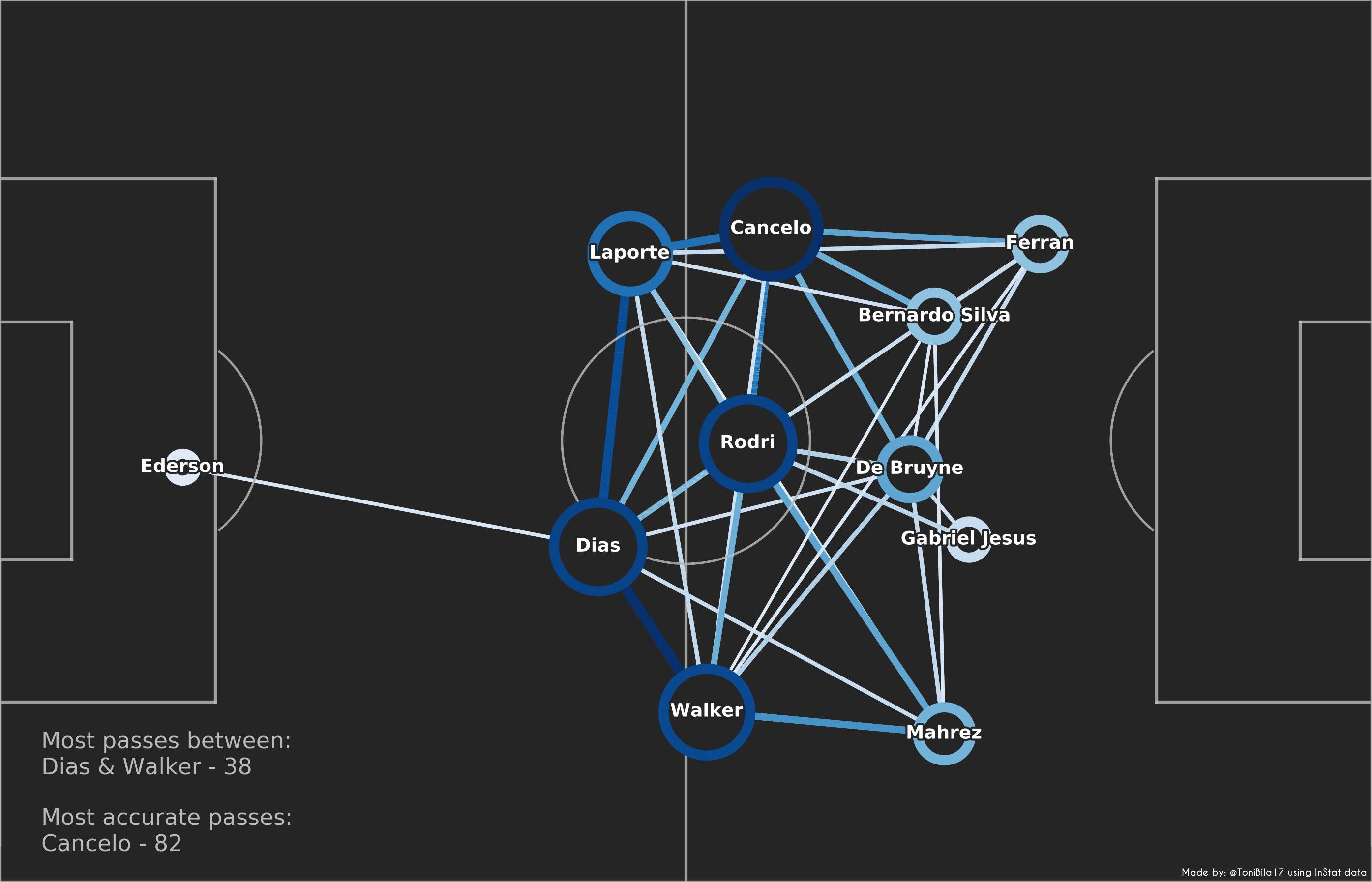Arguably the biggest match of this weekend happened on Saturday in the Premier League where Tottenham faced Manchester City. Tottenham have had a strong start to the season while Manchester City find themselves struggling to create quality chances. Of course, the historic rivalry between Guardiola and Mourinho only added to the attention given to this match. In the following visualisation we can see Manchester City’s passing network from the match. Bigger circles represent more passes by a player and a thicker line represents more passes between the two players it connects.

We decided to highlight Manchester City’s passing network over Tottenham to show the innovation of Pep Guardiola. This doesn’t, however, mean that this innovation is proving good so far, but the latest history shows that Pep tends to force this pattern of play where his full-backs fill the central positions in the build-up. Last season he often used one full-back to provide width while the other was positioned more central, but lately both of his full-backs have been mostly involved in central areas when they are in possession. Cancelo was the player with most passes during this match and he was involved a lot in their build-up. The most passes were between Dias and Walker followed by Dias and Laporte. It is a little unusual to see De Bruyne not being in top five passers in the match for Manchester City and it just shows Mourinho’s masterclass to prevent De Bruyne from receiving the ball often. Guardiola’s team had most of the possession, but they didn’t create many chances and have struggled to create chances this season in the Premier League.
Conclusion
Manchester City’s wingers mostly passed the ball backwards and rarely dribbled at an opponent to create space. Their wingers must take more responsibility in the creation both by dribbling and passing when De Bruyne is closed down well. Not only in this match but throughout the whole season it seems as if they miss difference-makers like Aguero who provides extra threat both on and off the ball.






Comments